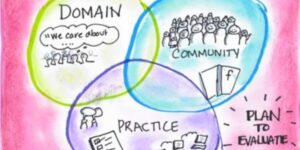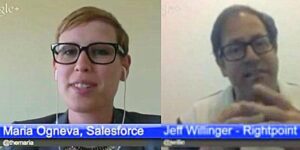
Social Learning: Making Connections Count #TChat Preview
In today’s connected world of work, how can we make the most of tools and techniques that help us curate and share collective wisdom?

In today’s connected world of work, how can we make the most of tools and techniques that help us curate and share collective wisdom?

Ask a community like ours a question, and stand back. You’re guaranteed to get answers you never expected. A lesson in the beauty of crowdsourcing…

With all the expert advice, tools and “thought leaders” available to us these days, who and what is making the biggest difference in your life? Let’s learn from one another!

Twitter. For recruiters, it’s now a hot spot — not only for talent acquisition, but also for professional development. Who’s leading this social learning movement?

Conferences: Who’s redefining the concept, and what does it mean for professional communities and personal brands? The case for crowdsourcing

What does a future-ready workforce look like? Business collaboration and learning expert Dan Pontefract says it features a special kind of leader

Digital communities: Why are they a challenge for businesses to create and maintain? How can enterprise organizations up their community game?

Digital communities are increasingly important to business organizations. But what really makes an enterprise community effective?
By definition, learning is a social function. How can business leverage this more fully to develop talent in the world of work? This week, we dug deep to explore the possibilities…
What does it mean to apply emerging social tools and techniques to the process of continuous learning? And why does it matter for individual professionals and the organizations we serve? Let’s talk about it!
“Engagement performance.” What does this term mean, and why is it essential to business learning and transformation in an era of social media? Video preview with Tim McDonald and Michael Clark…
On the 2-year anniversary of TalentCulture’s #TChat weekly Twitter Chat events, we looked back at the meaning of social and collaborative learning, and considered the road ahead….
Birds aren’t known to be mental giants. After all, does anyone really want to be called a “bird brain?” Yet, when it comes to communities, perhaps one of the smartest things you can do is to think like a bird. Here’s why…
People have very strong feelings about the definition of “community” in a social business context. And this week in the World of Work, we’ll dig even deeper into the differences and similarities among talent communities, social communities, and other communities supported by digital channels…
Quid pro quo. It’s a concept as old as civilization. And it’s a dynamic that lives at the core of every successful community — large or small, business or otherwise. This was the premise for a week of #TChat devoted to understanding what makes talent communities work…
I never get tired of talking about social communities and their impact on brands and the recruiting process for the right talent. But what does it mean to “manage” communities – and what is the role of a “community manager” in today’s social business environment?
Why is lifelong learning so critical to professional success? And how can individuals and businesses harness it more effectively at any age – in an era of social technologies? The TalentCulture community weighs in on #TChat Twitter…
Long before the digital age arrived, with its unrelenting firehose of disruptive technologies, the terms “social”, “learning” and “business” made sense within the same sentence. Today’s workplace just exposes the relationship more than ever. But how can organizations make the most of new-school learning possibilities?
If it wasn’t for those pesky, messy, meddling humans, the world of work would actually work flawlessly. We’d work together happily and collaboratively, without deceit,
What’s your morning communications, social media routine like? Mine’s getting more complicated every day. Personally, just email requires checking at least three accounts on three
Visit www.talentculture.com for more great information on #TChat, as well as other great resources on careers and hiring. The TalentCulture blogging community supports #TChat’s mission of sharing “ideas to help your business and your career accelerate — the right people, the right ideas, at the right time.”
Within HR and Recruiting, for example, a new technology is unfolding – one which will, in my opinion, change how individuals find work and how companies recruit. Talent Communities are here, driven by the powerful engines of social media, search, big data, ubiquitous computing and social communities.Talent communities are now replacing what many recruiters have traditionally called talent pools. Simply having a database of resumes to sort through to make a talent match has transformed into what we know as social recruiting.
Just because I like you, doesn’t mean we’re friends. At least on Facebook. I’m talking about the strange engagement arrangement between companies, associations, non-profits, clubs,
Written by Omowale Casselle Crowdsourcing is the act of outsourcing tasks traditionally performed by an employee or contractor, to an undefined, large group of people
While there are many ways you can establish your personal brand online and offline and inevitably stand out from others in your industry, functional area